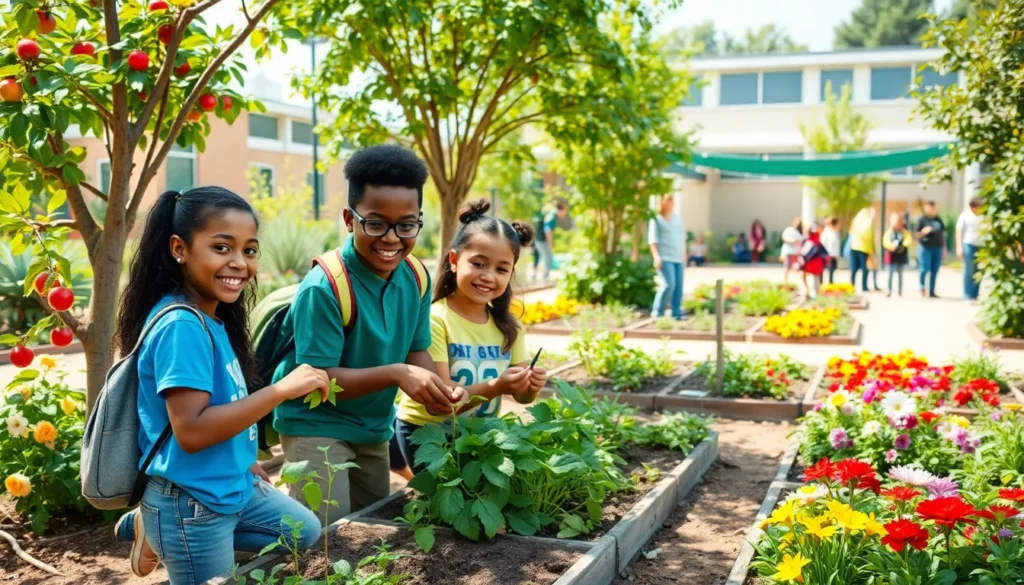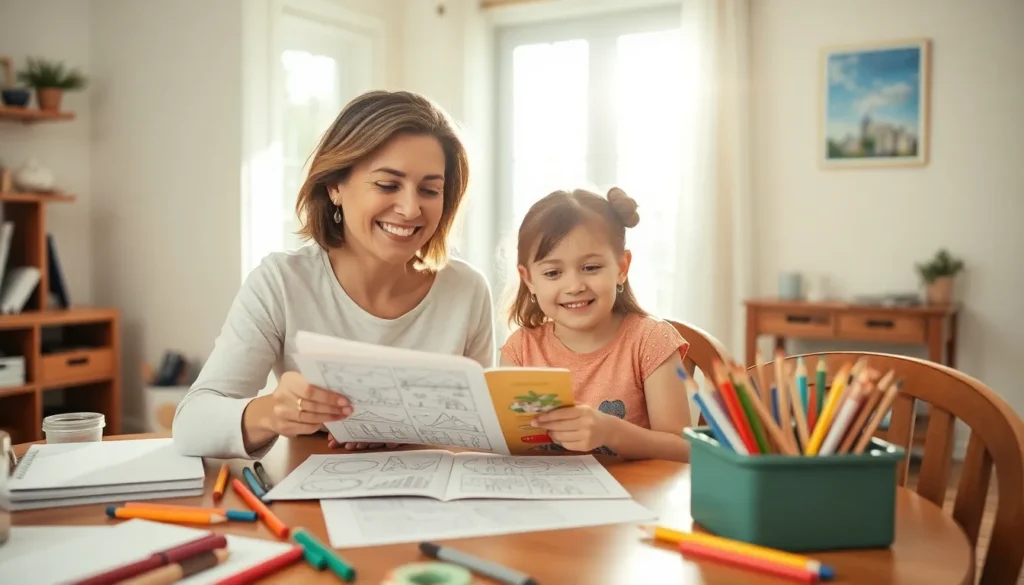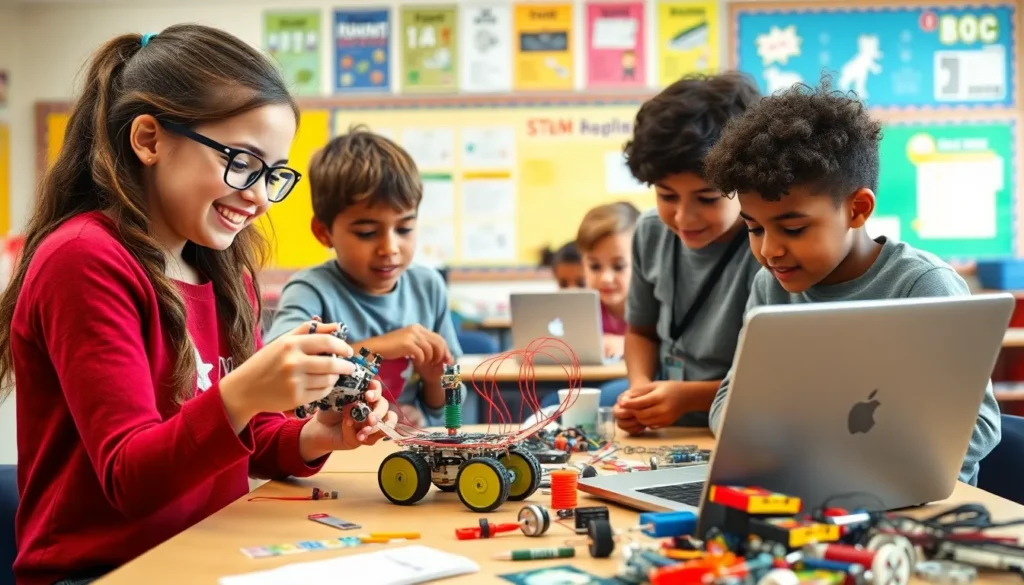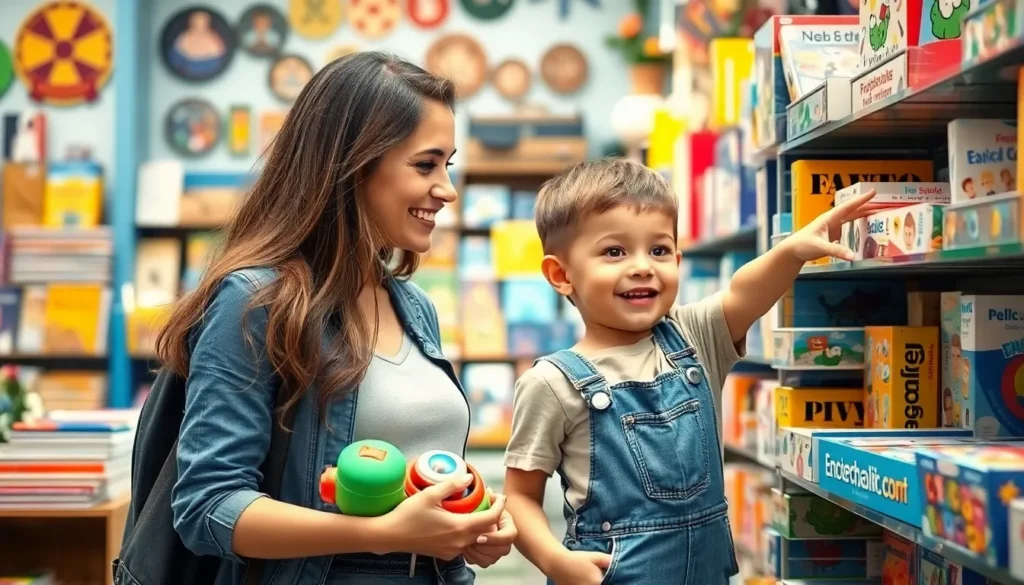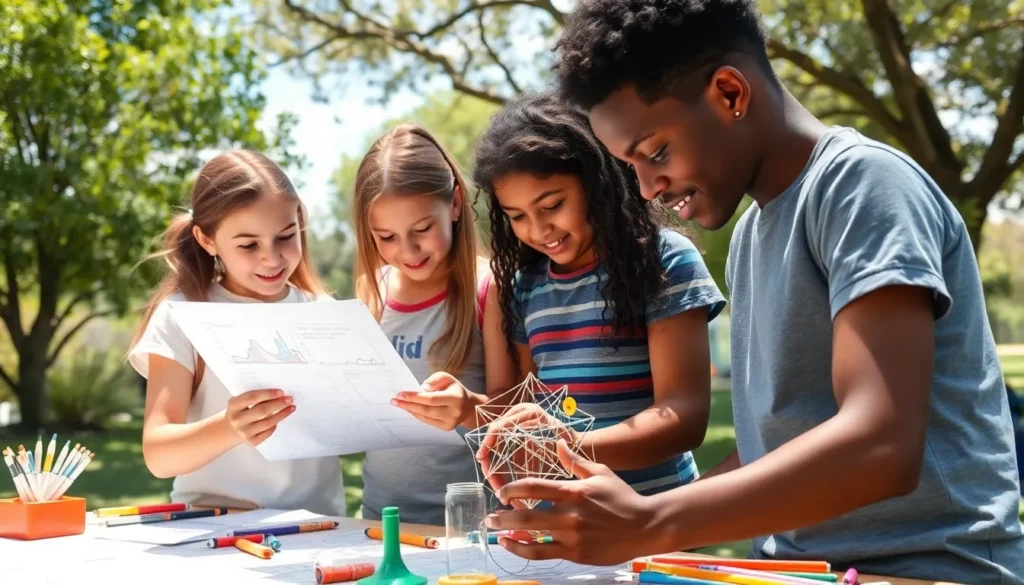Table of Contents
ToggleImagine walking into a school where the grounds are as inviting as a cozy coffee shop. A well-designed landscape doesn’t just beautify the campus; it creates a vibrant learning environment that sparks creativity and joy. From colorful flower beds to interactive outdoor classrooms, the right landscaping can transform dull patches of grass into dynamic spaces that inspire students and staff alike.
Creative School Landscaping Ideas
Incorporating colorful flower beds creates a welcoming atmosphere. Floral arrangements attract students and provide aesthetic value. Utilizing native plants offers low maintenance while promoting local ecosystems. Adding fruit-bearing trees can teach students about nature and sustainability.
Designing interactive outdoor classrooms engages students in hands-on learning. Tables and seating areas made from recycled materials encourage collaboration. Installing sensory gardens stimulates exploration through touch, smell, and taste. Pathways through landscaped areas provide clear routes while illustrating natural features.
Implementing green roofs enhances environmental benefits and conserves energy. These roofs can support educational activities, demonstrating ecological principles. Creating outdoor art installations inspires creativity and serves as a focal point for school pride.
Arranging sports fields and recreational areas promotes physical activity. Incorporating shaded zones with trees allows for comfortable outdoor gatherings. Adding rain gardens captures runoff while educating about water management.
Employing educational signage throughout the grounds instills knowledge about plants and animals. Interactive displays can share environmental and ecological facts, enhancing the learning experience.
Using wildlife habitats encourages biodiversity and can serve as a live learning resource. Spaces for outdoor science experiments foster hands-on engagement with nature.
Incorporating pathways lined with benches supports reflection and downtime. Comfortable outdoor spaces promote mental well-being among students and staff. Grouping seating arrangements can facilitate social interactions and strengthen community bonds.
Transforming school landscapes involves a blend of creativity and education. Each landscaping choice can contribute to an enriched learning environment, nurturing curiosity and a sense of community.
Benefits of School Landscaping
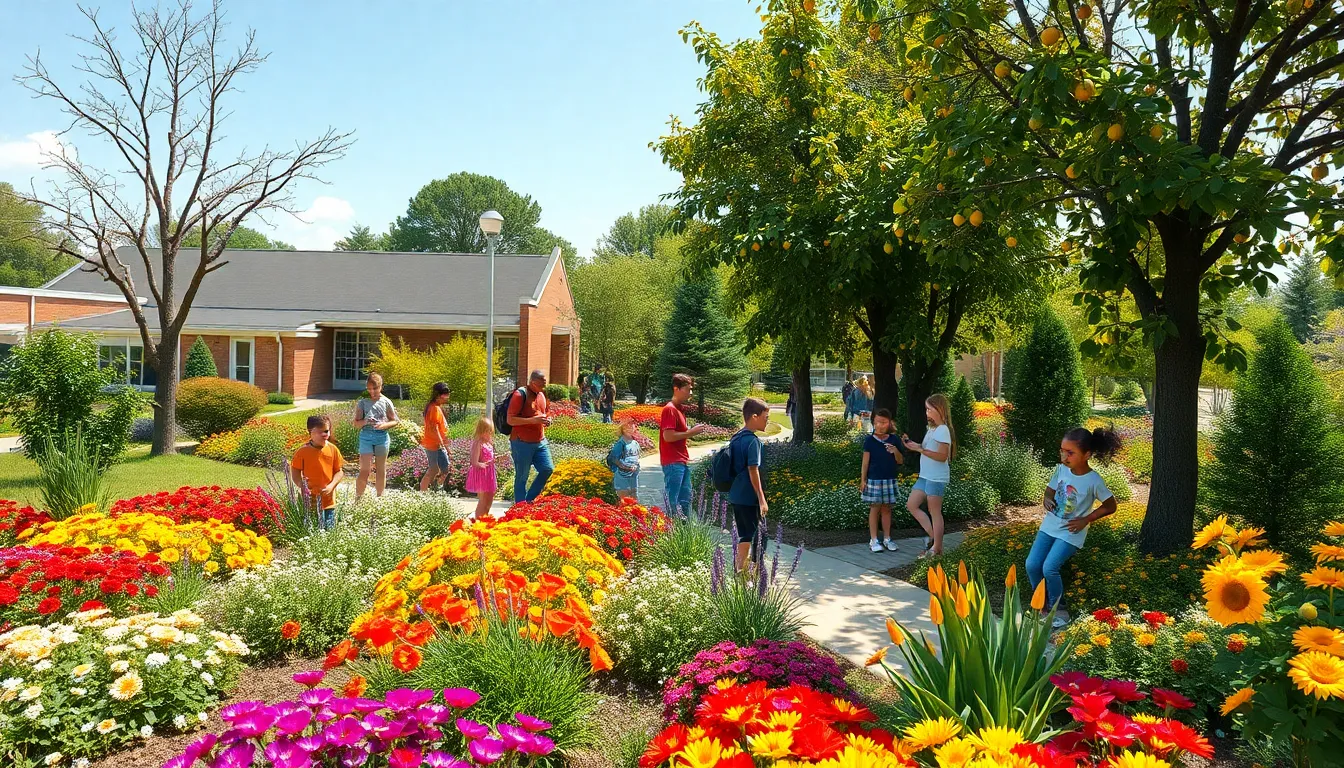
School landscaping offers significant advantages, creating inviting spaces that enhance learning experiences. Thoughtful design can lead to a range of benefits that promote both aesthetics and environmental awareness.
Enhancing Aesthetics
Landscaping beautifies school grounds, adding vibrancy and life to otherwise dull areas. Colorful flower beds and well-maintained gardens create inviting environments that encourage exploration. Students and staff can appreciate the visual appeal of native plants, which provide a sense of connection to the local ecosystem. Attractive outdoor spaces also uplift spirits, potentially increasing student and staff engagement. Comfortably arranged seating areas invite relaxation and social interaction, creating opportunities for collaboration outside the classroom.
Promoting Environmental Education
Landscaped areas serve as living classrooms, fostering a deeper understanding of nature and sustainability. Outdoor spaces educate students about local flora and fauna, enhancing biodiversity awareness. Incorporating fruit-bearing trees into the design offers hands-on learning about ecosystems and nutrition. Additionally, rain gardens can showcase essential water management practices, highlighting the importance of conservation. Environmental signage throughout the grounds can spark curiosity, encouraging students to explore topics related to ecology and stewardship. Engaging landscaping transforms school grounds into impactful teaching tools, promoting a lifelong appreciation for nature.
Elements of Effective School Landscapes
Effective school landscapes incorporate various elements, enhancing educational experiences and promoting interaction with nature.
Native Plants and Biodiversity
Native plants play a crucial role in supporting local ecosystems. These species require less water and maintenance, making them cost-effective choices for school gardens. They attract pollinators, such as bees and butterflies, promoting biodiversity on campus. Incorporating native trees and shrubs provides habitats for local wildlife, enriching students’ understanding of their environment. Environmental education becomes experiential when students observe the importance of these plants in sustaining habitats. Using local flora cultivates appreciation for nature while supporting conservation efforts.
Outdoor Learning Spaces
Outdoor learning spaces foster innovative teaching approaches. Integrating interactive areas encourages students to engage in hands-on learning outside the traditional classroom. Design elements, such as shaded seating or garden beds, facilitate group activities and cooperative projects. Outdoor classrooms promote exploration and creativity, enriching the curriculum with sensory experiences. Incorporating natural materials inspires students to connect with their surroundings while enhancing observation skills. Thoughtful design transforms outdoor areas into dynamic settings, allowing lessons to extend beyond standard walls.
Budget-Friendly Landscaping Solutions
Affordable landscaping options exist for schools to enhance their grounds without exceeding budgets. Effective solutions include DIY projects and fundraising initiatives.
DIY Projects
Creative DIY projects provide excellent opportunities for students and staff to engage in landscaping tasks. Building raised garden beds promotes collaboration and provides hands-on learning experiences. Planting native flowers empowers students to develop an understanding of local ecosystems. Creating bird feeders and insect hotels fosters a connection with wildlife, inviting nature closer to campus. Incorporating painted rocks as garden markers adds a personal touch and encourages teamwork.
Fundraising for Landscaping
Successful fundraising efforts help finance landscaping projects. Organizing bake sales and car washes can unite students, parents, and faculty while generating funds. Community sponsorships allow local businesses to contribute directly to improving school grounds. Hosting events like plant sales can engage the wider community while raising funds for specific landscaping initiatives. Collaborating with local garden centers might provide discounts or donations which can stretch budgets further. By combining these approaches, schools maximize fundraising potential for budget-friendly landscaping solutions.
Thoughtful school landscaping can significantly enhance the educational experience. By creating inviting and interactive environments, schools can inspire creativity and foster community connections among students and staff. Incorporating elements like native plants, outdoor classrooms, and sensory gardens not only beautifies the grounds but also promotes environmental stewardship.
Affordable DIY projects and community involvement can make these landscaping dreams a reality. With the right approach, schools can transform their outdoor spaces into vibrant learning landscapes that encourage exploration and collaboration. Ultimately, investing in school landscaping enriches the overall learning environment and cultivates a sense of pride within the community.

